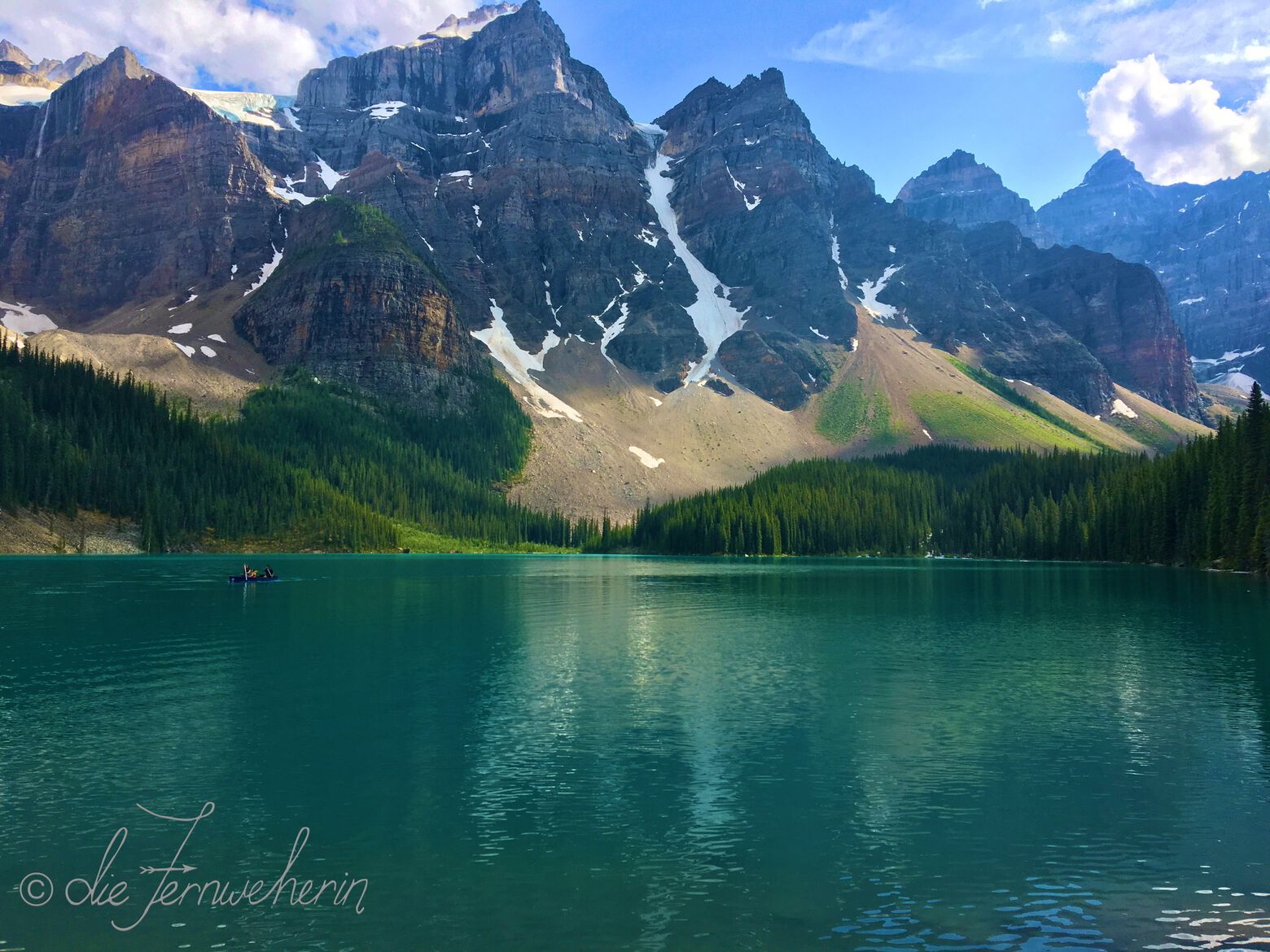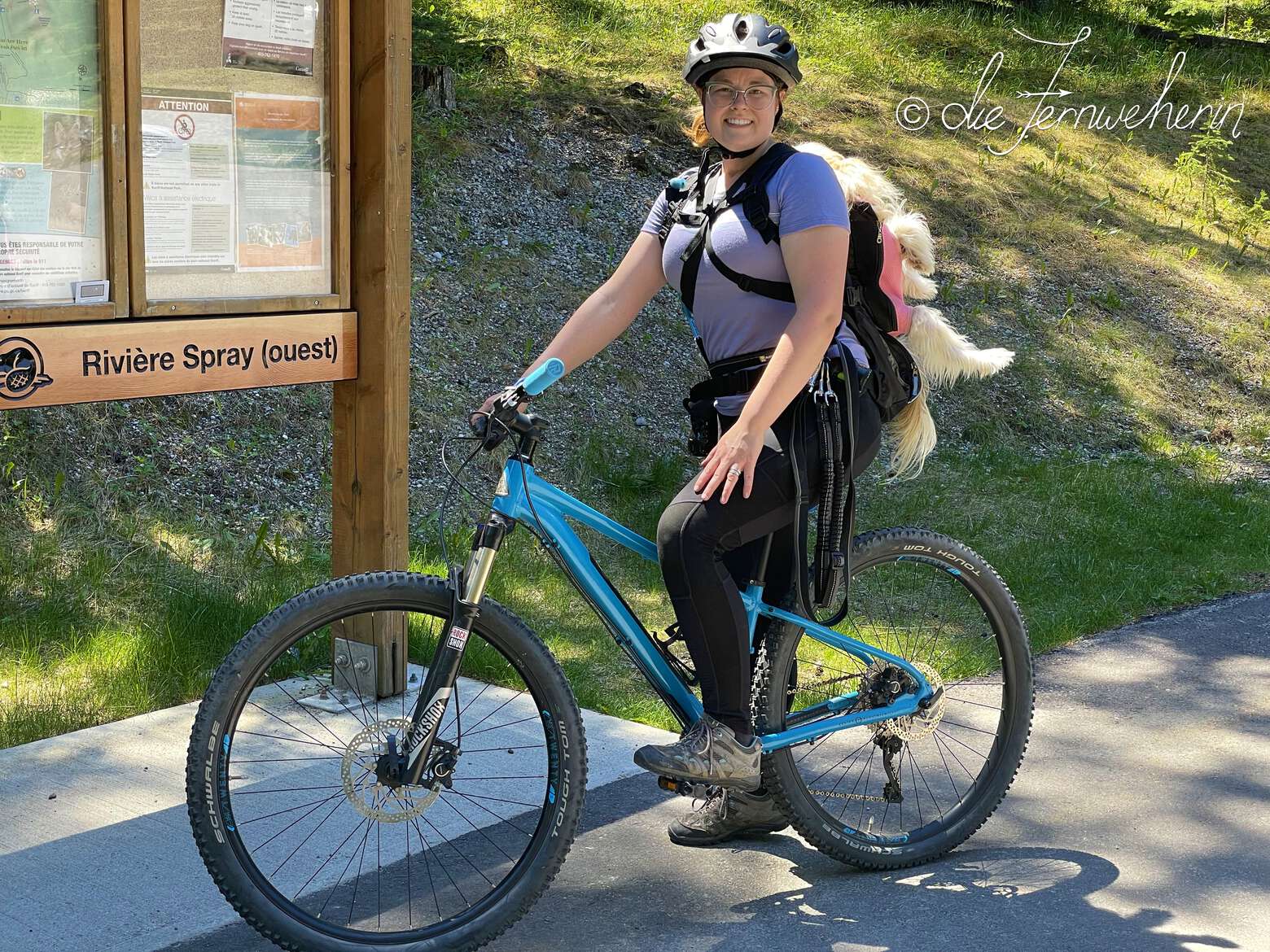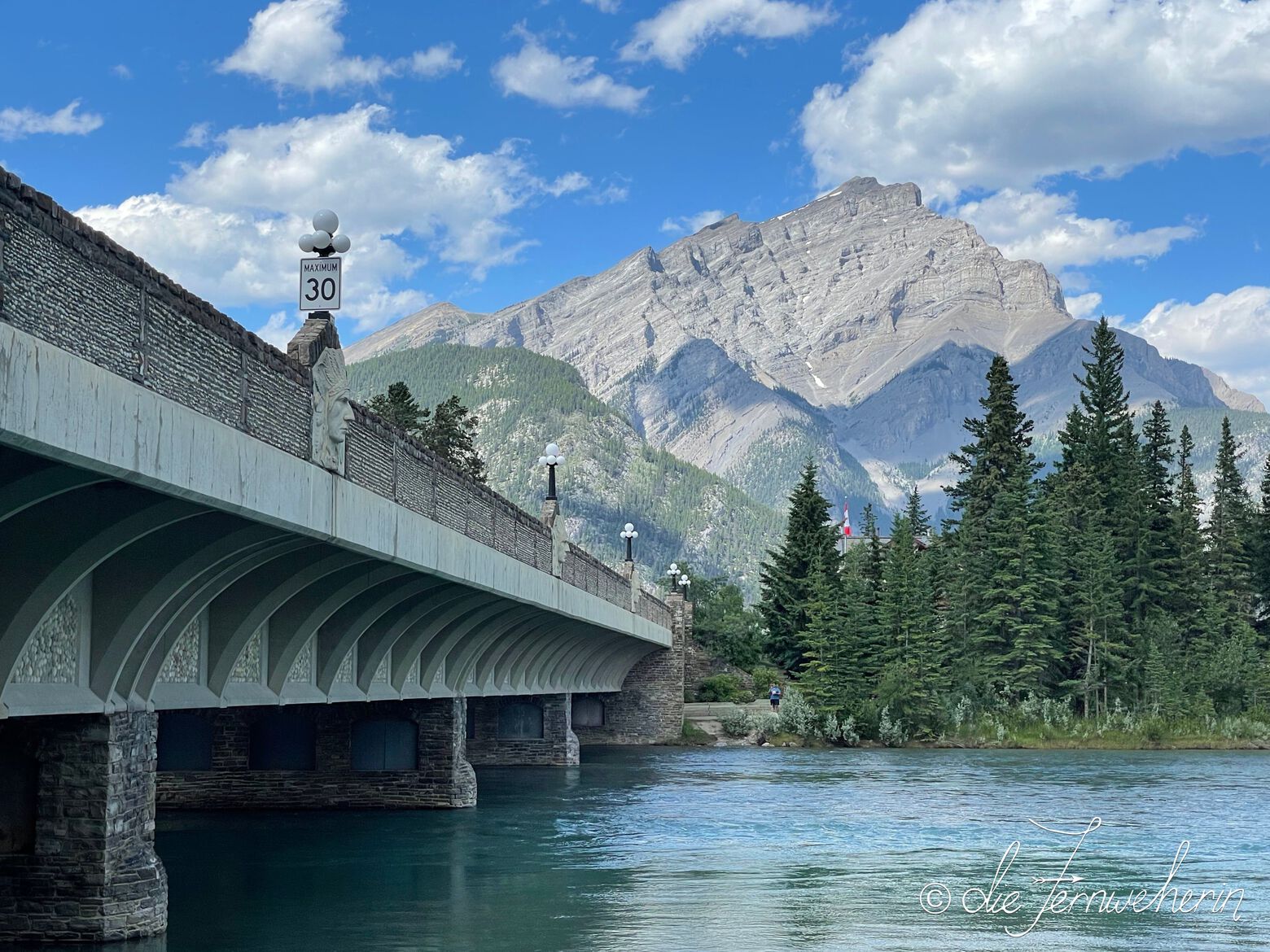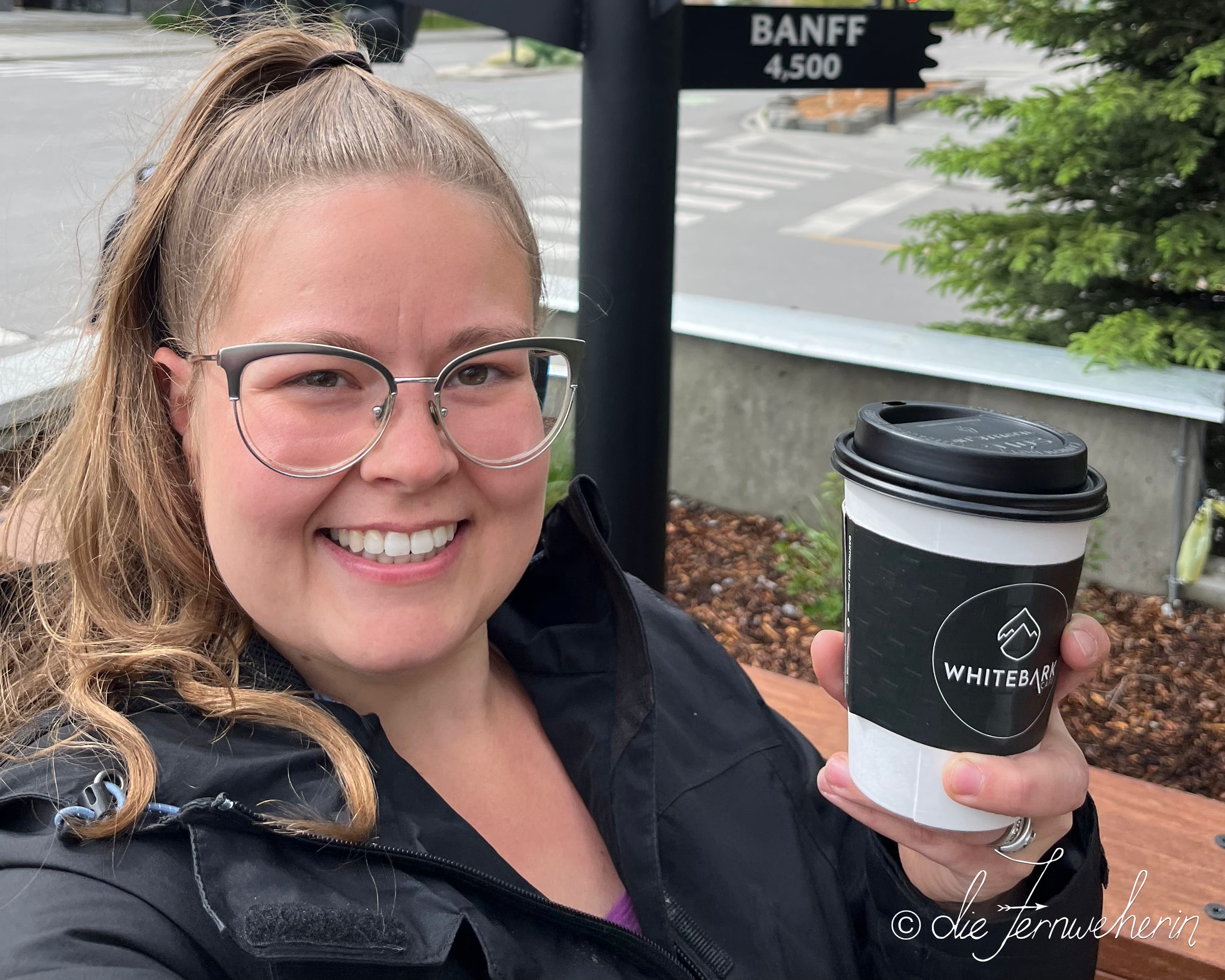Now that you’ve explored the town of Banff and its immediate vicinity, it’s time to venture further afield. In the spirit of saving the best for last, the next few days will check off some of the most spectacular sights the park has to offer; in fact, if you only have a few days to spend in Banff National Park, I would recommend focussing your time on this latter half of the itinerary, and visiting what you can from Days 2 & 3 on your arrival and/or departure days. If you’re really crunched for time, you may be able to combine Day 4, 5, & 6 into one or two days, but fair warning: You will have to visit in late June/early July when the days are longest, and you’ll be hopping from sun-up to sun-down with hardly any time to take in all the breath-taking scenery (and forget being able to relax over dinner at a nice restaurant). Personally, I think that this itinerary as-is sets a perfect pace. So, without further ado, let’s get going!
pin this post!
The Best of Banff National Park
Day 4
Today you will visit three of the most famous sites in Banff National Park: the Bow Valley Parkway, Johnston Canyon, and Lake Louise. While an early start is recommended, it is by no means necessary, especially if you plan on using public transit, since you won’t be racing anyone for parking. Expect this day to take between four to ten hours, depending on how many stops you make on the Parkway and how much time you decide to spend in Lake Louise at the end. If you like to change hotels based on where you’re going to be exploring, this is the ideal time to move from Banff or Canmore to Lake Louise.
What to do
<< contents // how to get there >
the bow valley parkway
johnston canyon > // lake louise >
First things first, assuming you’re starting in Banff or Canmore, you’re going to have to hit the road—by which I mean the Bow Valley Parkway, also known as Hwy 1A. (If you’re staying in Lake Louise, simply complete this day’s agenda in reverse.) Hwy 1A used to be the main road linking Banff with Lake Louise, until the larger Hwy 1 was built on the other side of the river in the 1990s. As you travel along, keep your eyes peeled for wildlife. This route runs through the ‘montane’, an important habitat zone for top predators, and provides viewing opportunities for bears, bighorn sheep, elk, moose, mule deer, and—if you’re very lucky—wolves. And even if you don’t see any animals, it’s still an incredibly scenic route, with backdrops ranging from verdant forests to picturesque meadows to the iconic peaks of Castle Mountain. There are plenty of great options for spots to pull over and take in the views, have a picnic, or go for a hike.
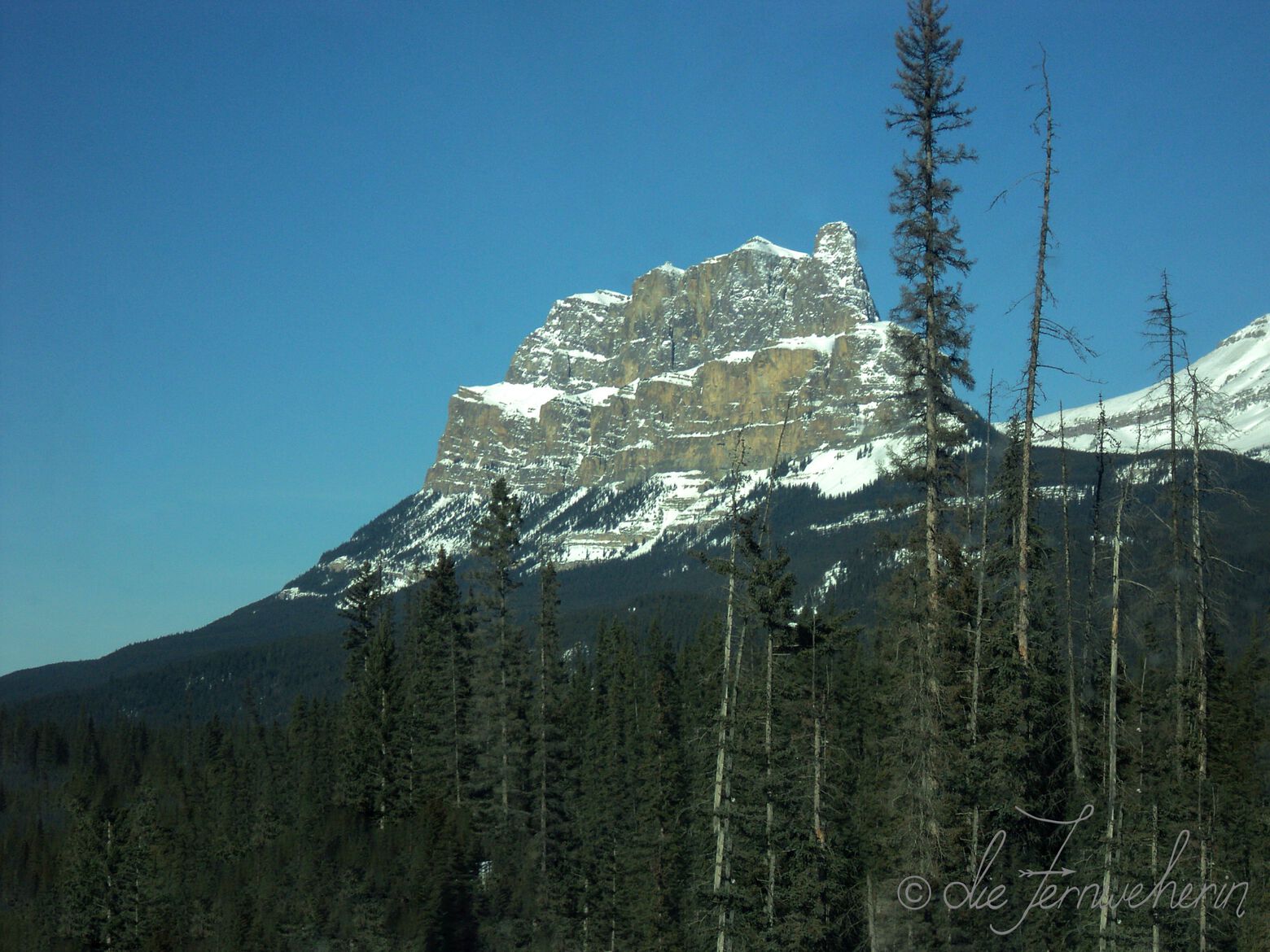
johnston canyon
Johnston Canyon, located approximately halfway along the Parkway, is the most popular place to stop, and for good reason. Not only does the unique trail actually wind through the canyon itself, offering unparalleled views of Johnston Creek and its multiple cataracts, it’s also super accessible to even the most novice of hikers. In fact, it’s possible to reach the Lower Falls via wheelchair! The path to the Upper Falls, while a bit more strenuous (there are two short, steep sections leading up to the viewpoints) is still fairly easy all things considered. Roundtrip, the entire trek only takes between one and two hours. If you’re looking for a longer hike you can continue on past both sets of falls to the Inkpots, but keep in mind that another of the most famous spots in Canada is coming up next.
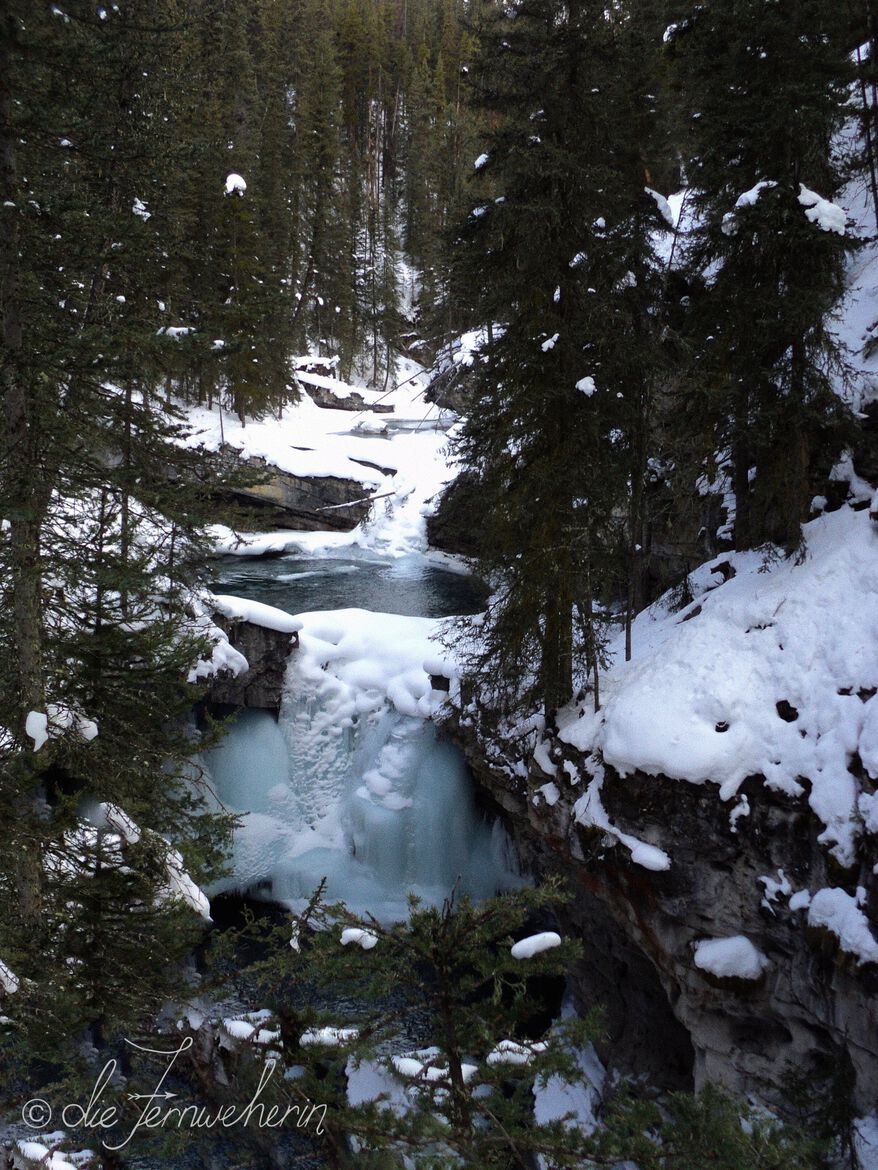
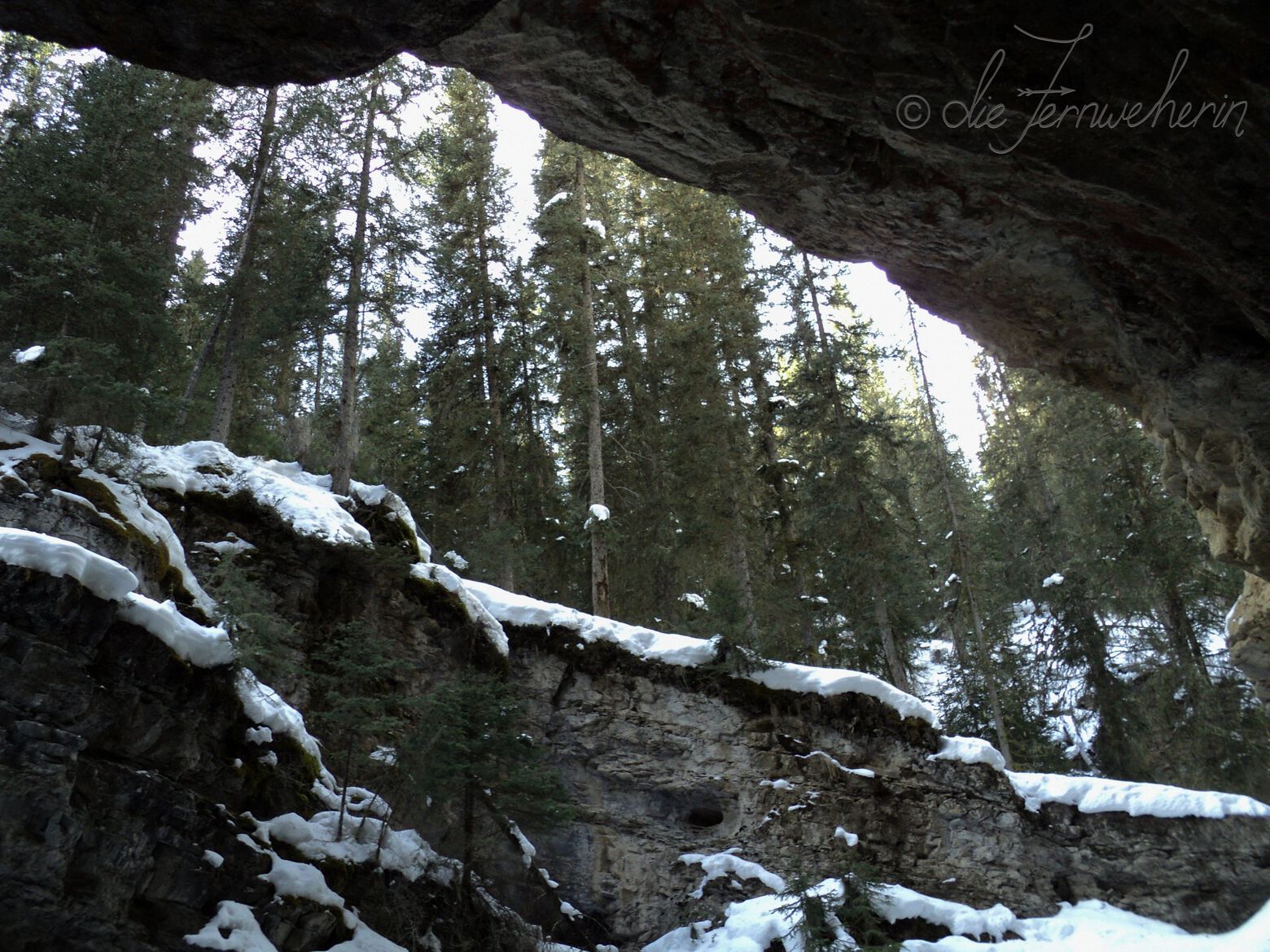
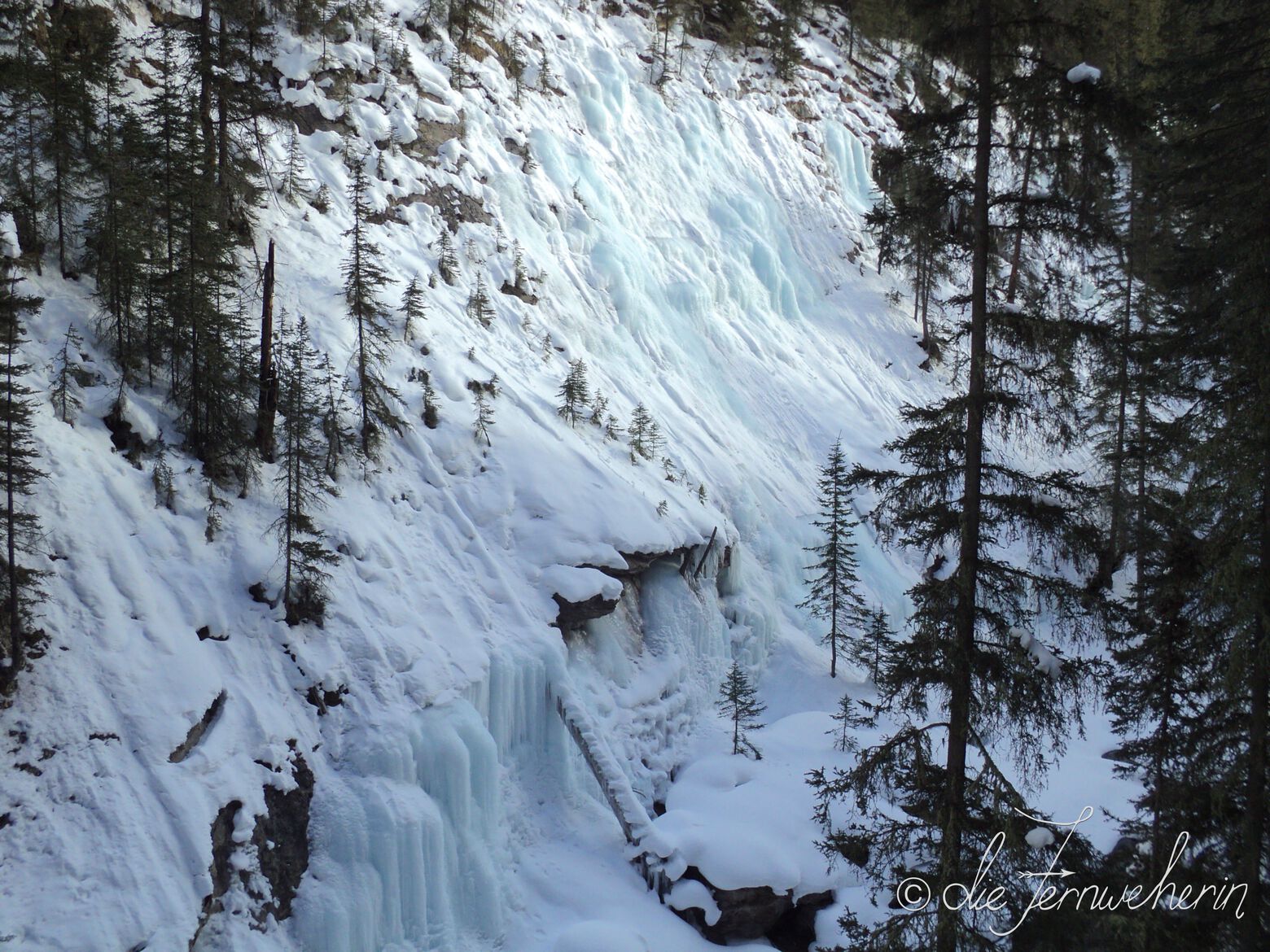
lake louise
Continue down the Parkway to its endpoint: Lake Louise. Yes, it gets crowded, and yes, that can be frustrating to deal with, but it is undeniably worth a visit. There are a lot of gorgeous glacial lakes in the Rockies, some of them arguably more “pretty” than Louise, but there’s a sense of majesty here in particular that can’t be found anywhere else. And there are benefits to visiting such a popular place. For example, because of the huge number and variety of visitors it receives year-round, there’s an incredible assortment of things to do & see.

From late spring to mid fall, choose from a dazzling array of activities such as hiking one or more of the 20+ stunning trails in the area; relaxing and taking in the views from the lakeshore, one of the Fairmont Château’s award-winning restaurants, or the Lake Louise Gondola; canoeing or paddle-boarding on the glassy blue lake itself; or embracing your inner equestrian and going horseback riding! Once the snow starts to fall, explore the beautiful winter wonderland by snowshoeing or cross-country skiing, wonder at the ice sculptures on the Château Lake Louise grounds and go skating on the frozen lake, or try something new and go dog-sledding (and, of course, there’s always what the mountains are famous for in the winter: downhill skiing). No matter what you pick it’s sure to be spectacular, but if you’re feeling overwhelmed, here are some of my favourite suggestions:
- Hike the Little Beehive Trail.
- Go horseback riding along the Plain of Six Glaciers.
- Watch grizzly mamas and their cubs forage for berries from the safety of a gondola carriage.
- Indulge in high tea at the Fairview Restaurant.
- Go on a dog-sledding tour of the Great Divide.
- Hit the slopes of the world-class Lake Louise Ski Resort.
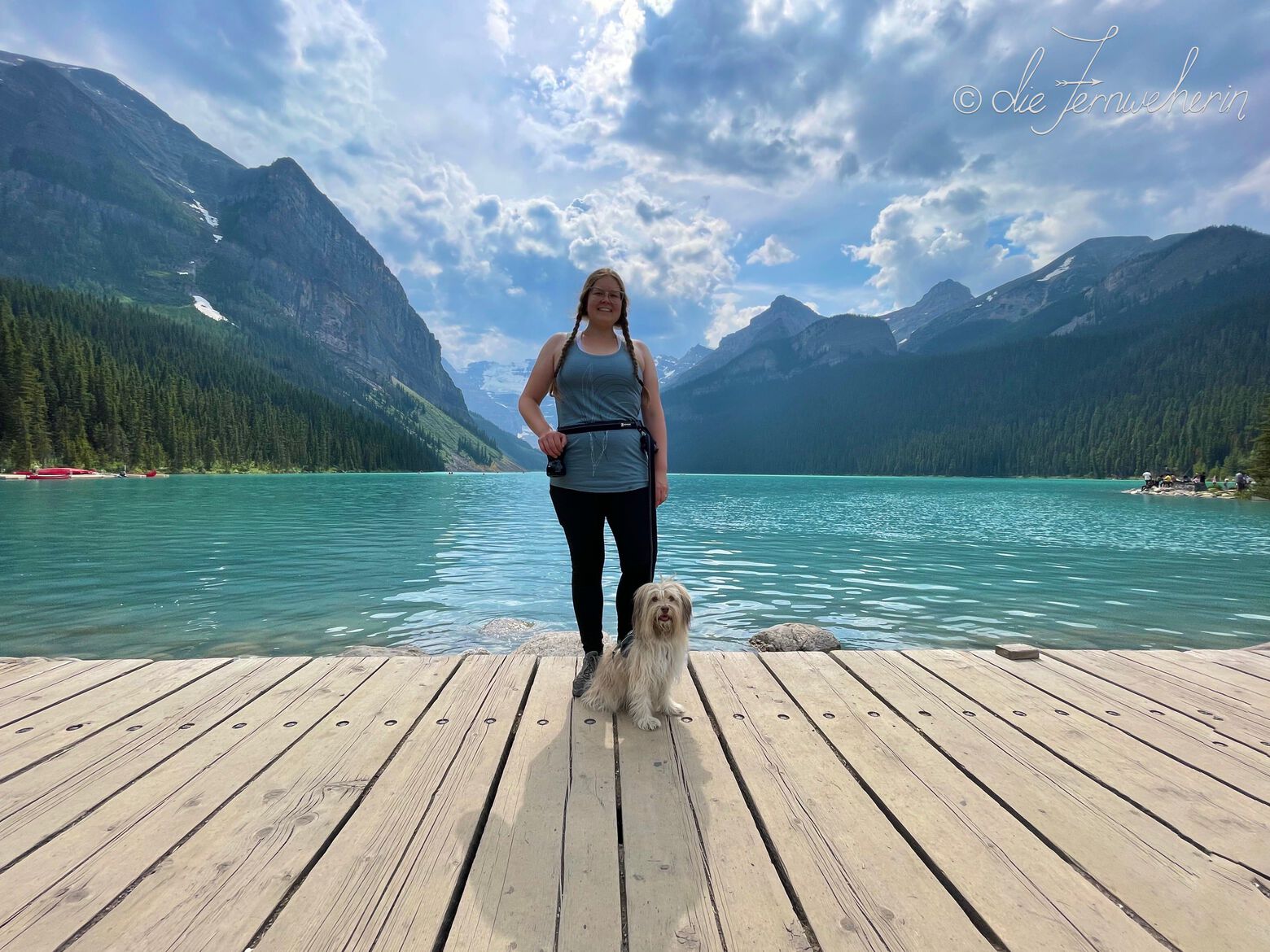
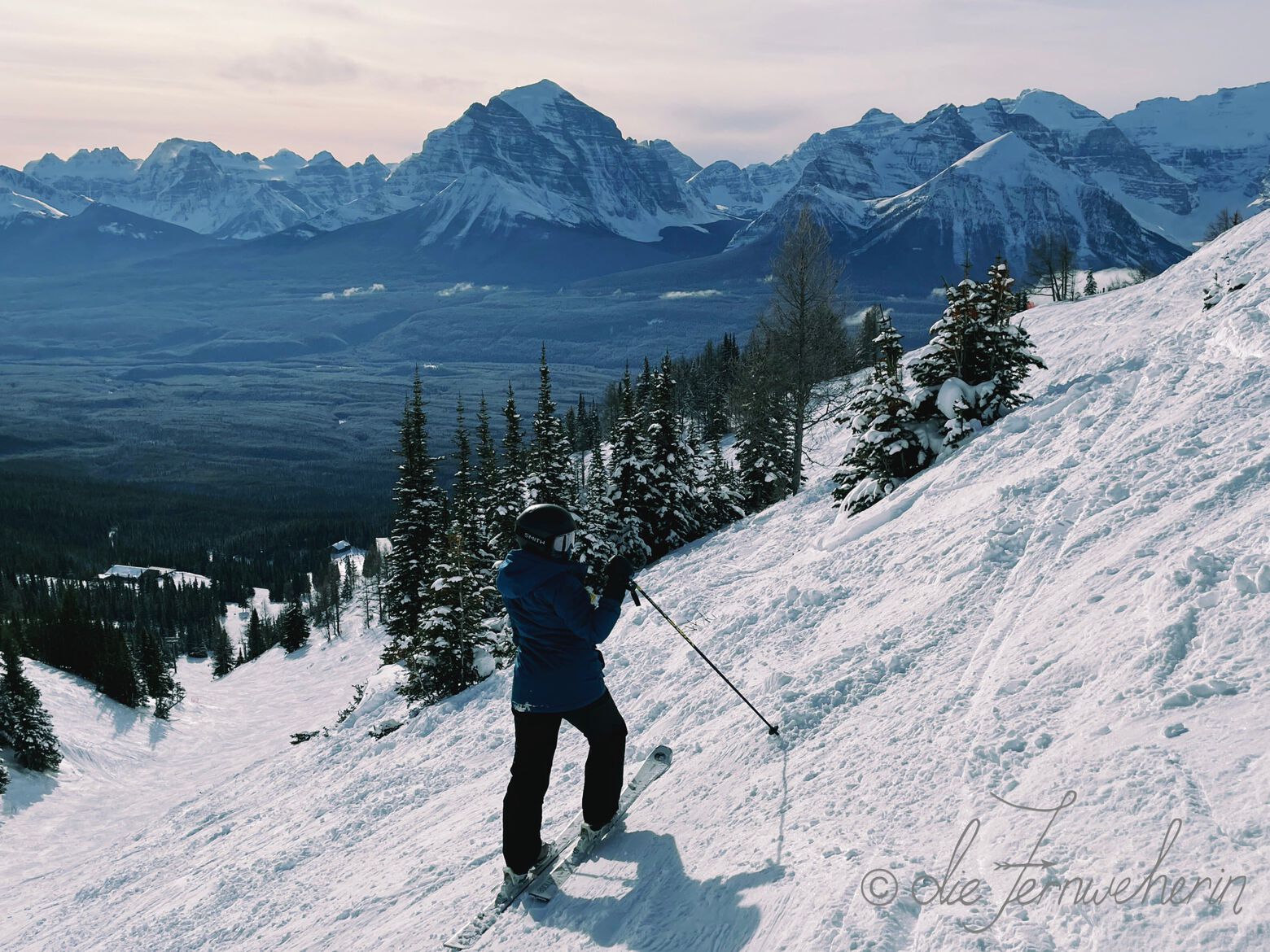
There’s an incredible assortment of things to do & see in Lake Louise. No matter what you pick it’s sure to be spectacular!
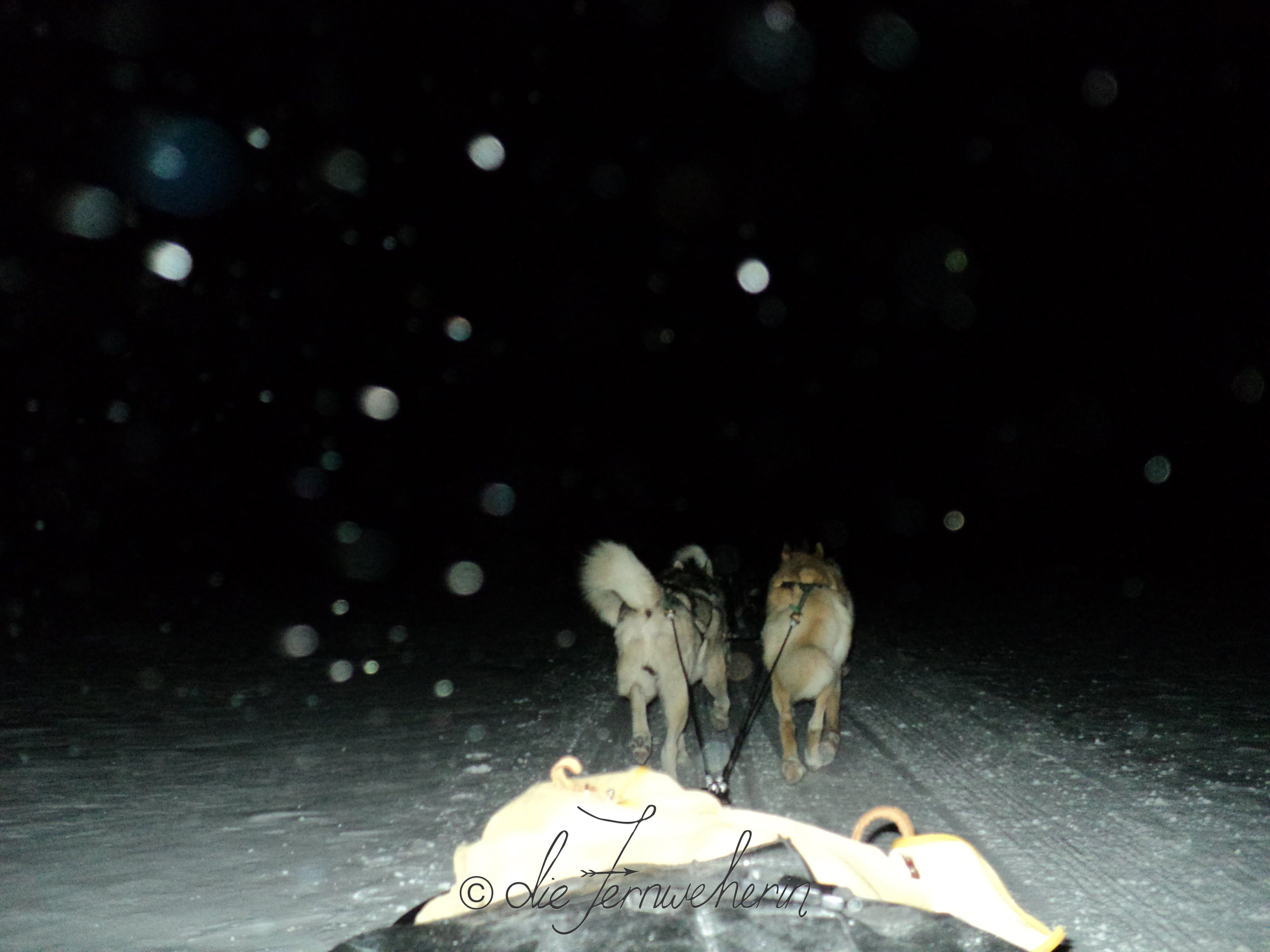
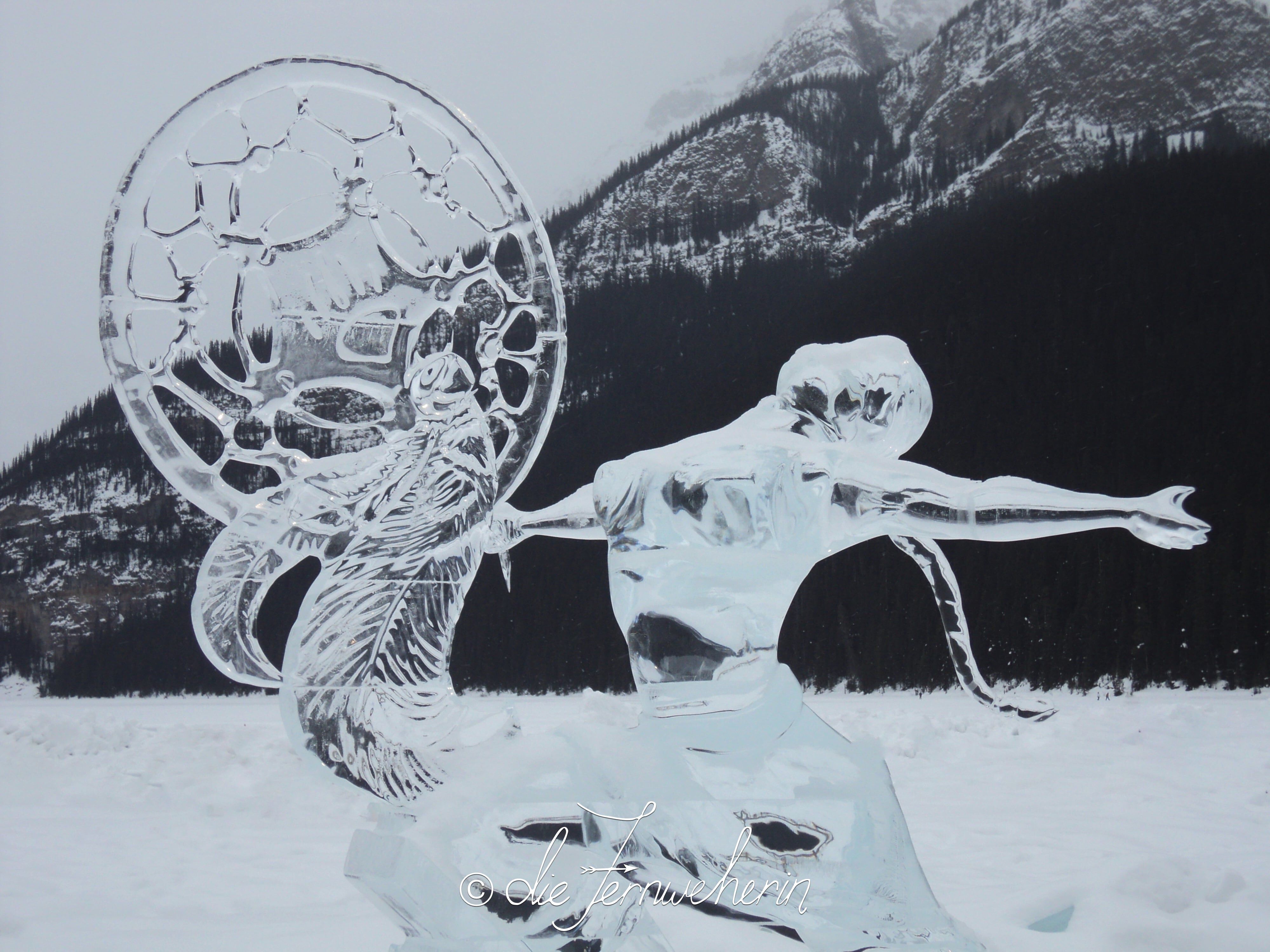
How to get there
<< contents
driving
Both Johnston Canyon and Lake Louise can be accessed via the Bow Valley Parkway, which is why all three together make such a great day trip. To get to the Parkway from Banff or Canmore, head west on Hwy 1, and take the first exit for Hwy 1A, which is easily identifiable by the digital sign pointing the way to Johnston Canyon & Castle Mountain. This exit (about 6km past the Banff townsite) is referred to as “Fireside Junction” by Parks Canada, due to its proximity to the Fireside Day Use Area. It is extremely important to note that this exit does close on occasion! From the 1st of March to the 25th of June, from 8:00pm (20:00) to 8:00am, vehicles are not permitted on the Parkway between Fireside Junction & Johnston Canyon, and Parks Canada is currently looking into implementing further restrictions during the spring & fall (for more details, click here).
If the Fireside Junction exit is closed when you visit, or if you’re pressed for time (the speed limit on the Parkway is quite a bit lower than the main highway), you can still access Johnston Canyon, Lake Louise, and the portion of the Bow Valley Parkway between them by continuing 23km further along Hwy 1 past Fireside Junction, and taking the Hwy 93S/Hwy 1A exit instead (referred to as “Castle Junction” by Parks Canada due to its proximity to Castle Mountain).
Assuming you made it onto the Parkway at Fireside Junction, 17km down the road you’ll come across a roundabout. Take the first exit (turn right) to access the parking lot for Johnston Canyon. If you entered the Parkway at Castle Junction, turn right onto the Parkway, drive for 6km to the roundabout, then take the third exit (turn left) into the parking lot. The drive from Banff to Johnston Canyon takes a minimum of 30 minutes, but if you stop for photos—which I highly recommend doing—it will likely take 45-60 minutes. From Canmore, expect it to take 60-90 minutes.
Once you’re ready to head to Lake Louise, turn right from the parking lot onto the Parkway and continue along it for another 32km. When you come to the T-intersection, turn left. Continue along Lake Louise Drive for 4km following the signs for the lake, and make a left turn into the parking lot. Altogether this will take about 35-75 minutes.
If you are staying in Lake Louise and completing this day’s itinerary in reverse, to access the Parkway simply continue straight along Lake Louise Drive following the signs for the ski hill, and 1km after the overpass turn right onto Hwy 1A. Drive for 32km (about 35 minutes), and take the third exit (turn left) into the Johnston Canyon parking lot.
parking at lake louise
Parking in the lakeside lot from mid-May to mid-October costs $13 from 7:00am to 7:00pm (19:00), and during peak season the lot usually fills up by mid-morning, especially on weekends. If the lot is full, or if you don’t want to pay, there are several alternative options:
If you don’t mind a bit of a walk, you can park at the Great Divide Trailhead lot, then cross the street and take the Louise Creek Trail the last 1km up to the lake. Assuming you’re heading up towards the lake, the turnoff for this lot is on the righthand side, 3km past the highway overpass (if you’re coming back down because the lakeside lot is full, you’ll turn left after about 1km, right in the middle of the first big bend in the road).
You can also park at the Fairway Day Use Area, which if you’re heading up is on your righthand side 2.5km from the overpass (heading down, it’s on your left 1.5km from the lake). From Fairway, you can either walk 1.5km along Lake Louise Drive, or cross the street and backtrack 200m to the Moraine Lake turnoff, where the Tramline Trail intersects with the road another 200m in. Make sure to turn right onto the trail, from which point it’s a 3km hike to the lakeshore. If you want to hike the entirety of this 6km trail, the trailhead is located at the Lake Louise Train Station near the Village, and parking is free.
The last option (only available during mid-May to mid-October) is to park at the Park & Ride Lot and take public transit up to the lake. This lot is located along Hwy 1, southeast of the Lake Louise exit. If you’re coming from the Bow Valley Parkway, instead of continuing straight past the overpass as described above, you’ll turn left (following the sign for Banff), drive along Hwy 1 for 5.5km, and then turn right into the Park & Ride Lot (also called the Lake Louise Overflow Parking Lot). If you’re coming down from Lake Louise because the lot was full, turn right onto Hwy 1 (signs for Banff), and follow the rest of the directions as written above. From the Park & Ride, there are two ways to get to the lake: the Parks Canada shuttle ($8.50 roundtrip per adult, plus a $3 reservation fee per transaction), or the Roam bus ($20 for a adult 1-day pass). The Parks Canada shuttle requires reservations. Seats are released in a rolling fashion, so you can book online several months in advance, or closer to the date. The last bundle of seats is made available two days prior, and occasionally there are still seats available to book on the day of, but if you’re visiting during July or August, or on a weekend, I wouldn’t recommend the wait-and-see approach. Roam Transit Route 8X, on the other hand, is non-reservable, but that does mean that you are not guaranteed a seat if the bus is full.
public transportation
Both Roam Transit Route 9 & Route 8S link Banff with Johnston Canyon, the latter of which also connects Johnston Canyon with Lake Louise (both routes can be used by purchasing an adult 1-day pass for $20). Unfortunately, neither of these options utilizes the Parkway between Fireside Junction & Johnston Canyon, but Route 8S does travel along the northwestern half of the Parkway (between Johnston Canyon & Lake Louise). The ride to Johnston Canyon takes 35 minutes, and from there to Lake Louise it’s 50 minutes more.
other options
< driving
MPT offers a shuttle service from several Banff hotels to Lake Louise ($32 roundtrip per adult), but does not provide service to Johnston Canyon, so you would have to visit Lake Louise first, then use Roam Transit to get from Lake Louise to Johnston Canyon, and back to Banff from there. The Banff Hop-On/Hop-Off Bus ($69 for an adult all-day ticket) runs during the summer months, and stops at Johnston Canyon, the Lake Louise Gondola, Lake Louise Lakeshore, and Moraine Lake, allowing you to complete Day 4 & 5 in one go, as long as you don’t plan on spending more than an hour or so in each location.
Three Sisters Taxi offers transportation to both Johnston Canyon and Lake Louise. Either option will run you $315 (the total price for up to 6 people), but it’s likely that they would offer you a better rate if you asked to combine the packages, so if you’re travelling with a group it’s worth inquiring.
Of course, being so beautiful, and occasionally closed to vehicle traffic, the Bow Valley Parkway is an amazing road to bike on; however, it’s also a long one. The southeastern section alone (from Fireside Junction to Johnston Canyon) is almost 18km one-way—the northwestern portion measures in at 32km—and that’s assuming you can find a parking spot right off Hwy 1. If you end up needing to bike from Banff, you’re looking at an extra 7km, plus 5km from the end of the Parkway to Lake Louise itself, for a total roundtrip distance of almost 125km. Now, that’s not to say that you have to bike the entire distance. If you’re looking for a way to add some biking into your day, rather than spending your day biking, there are two options: either bike from Banff to Johnston Canyon (25km), and from there take Roam Transit to Lake Louise and back to Banff; or park at Castle Junction and shorten the ride to 12km (6km one-way to Johnston Canyon).
<< contents
Day 5
If you’re a major photography buff, then this is the day that you absolutely have to get up early. The small parking lot at Moraine Lake fills up by 5:30am on weekdays (even earlier on weekends or during larch season) and you do not want to miss capturing the ineffable beauty of the sun rising over the Ten Peaks and their reflection in the still glacial blue water. But if the thought of getting up by 4:00am makes you want to scream and cry and stomp your feet, don’t worry—you can still visit Moraine Lake, and it will still be gorgeous! You can either sleep in and take public transit, or go in the evening instead (as long as you’re not planning on tackling a long hike).
Heads up! Access to Moraine Lake is not possible during the winter. The road closes to vehicles following Canadian Thanksgiving (the second Monday in October), and does not reopen until late May/early June. While it is possible to cross-country ski along the road in the winter, you will not be able to access the lake itself. Depending on the amount of snowfall, you may be able to bike up to the lake in the shoulder season (mid to late October & early to late May), but be extra cautious as there is no staff presence—and no phone service—should you run into trouble. So, if Moraine Lake is on your “must-see” list, make sure that you plan your visit sometime between June and early October. If you are visiting during the winter, then today is a free day! Use it however you wish, either to revisit someplace you really loved, or to experience something new not otherwise included in this itinerary.
What to do
<< contents // how to get there >
No matter when you get there, the first thing you’re going to want to do is to hightail it to the Rockpile Trail, which isn’t really a trail so much as it is several sets of stairs leading to a series of viewpoints. Despite the boring name, this is where you’re going to get those drool-worthy pics of the lake with the Ten Peaks in the background.
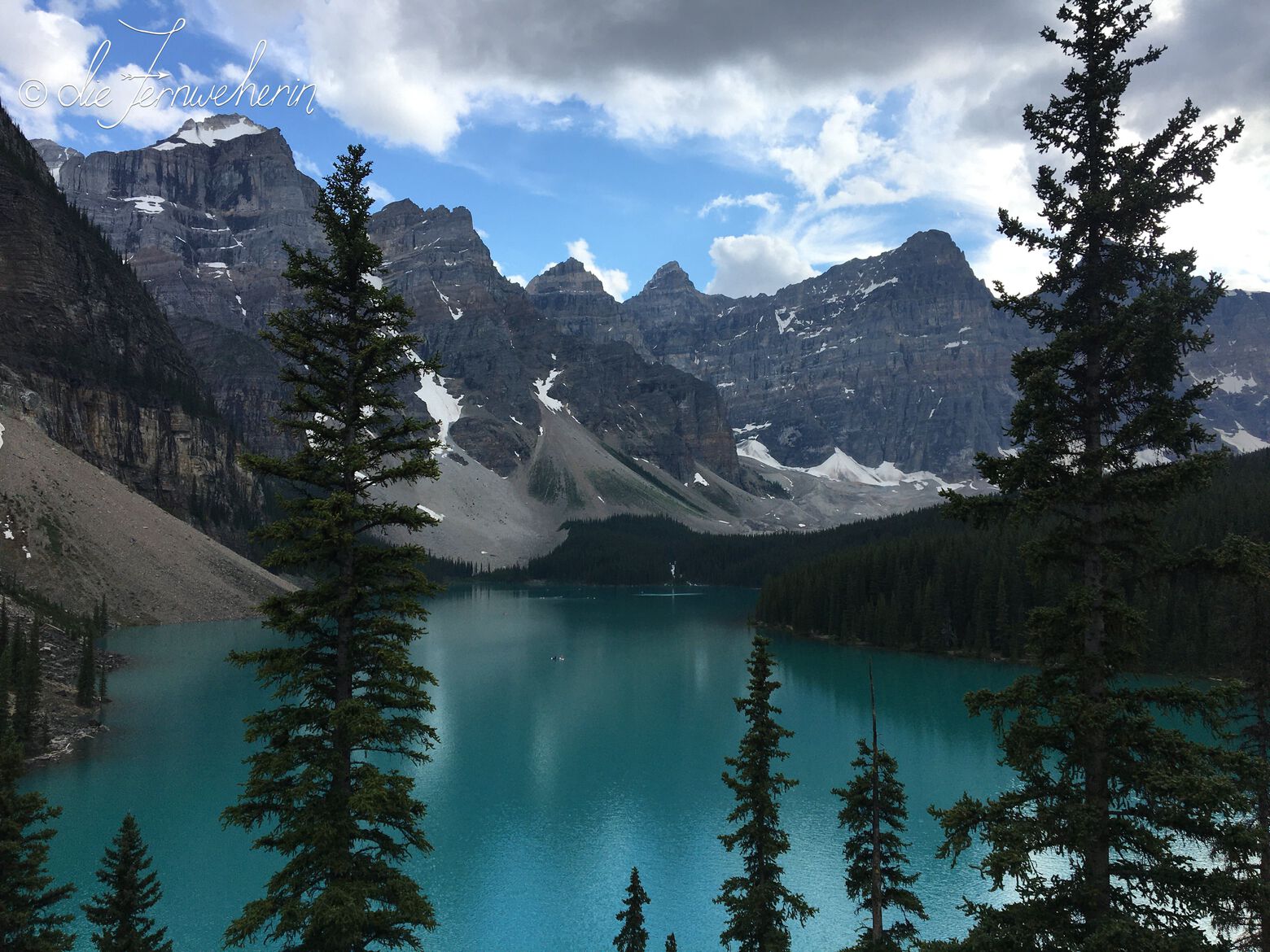
Once you’ve gotten your shots, you can choose to explore the area further by going on one of the many hikes, or by paddling on the lake (but be warned, canoe rentals start at an eye-watering $121 per hour; you can bring your own non-motorized watercraft if you have one, but you would have to go either before sunrise, or in the evening to score parking). If hiking is your jam, I recommend the Shoreline Trail, followed by either Larch Valley (a must in the fall) or Eiffel Lake. If you’re a strong hiker, you can continue on, respectively, to Sentinel Pass or Wenkchemma Pass, but the best bang for your burning muscles is going to be scrambling up either the Tower of Babel or Mount Temple, both of which offer incredible birds’-eye views of Moraine Lake.
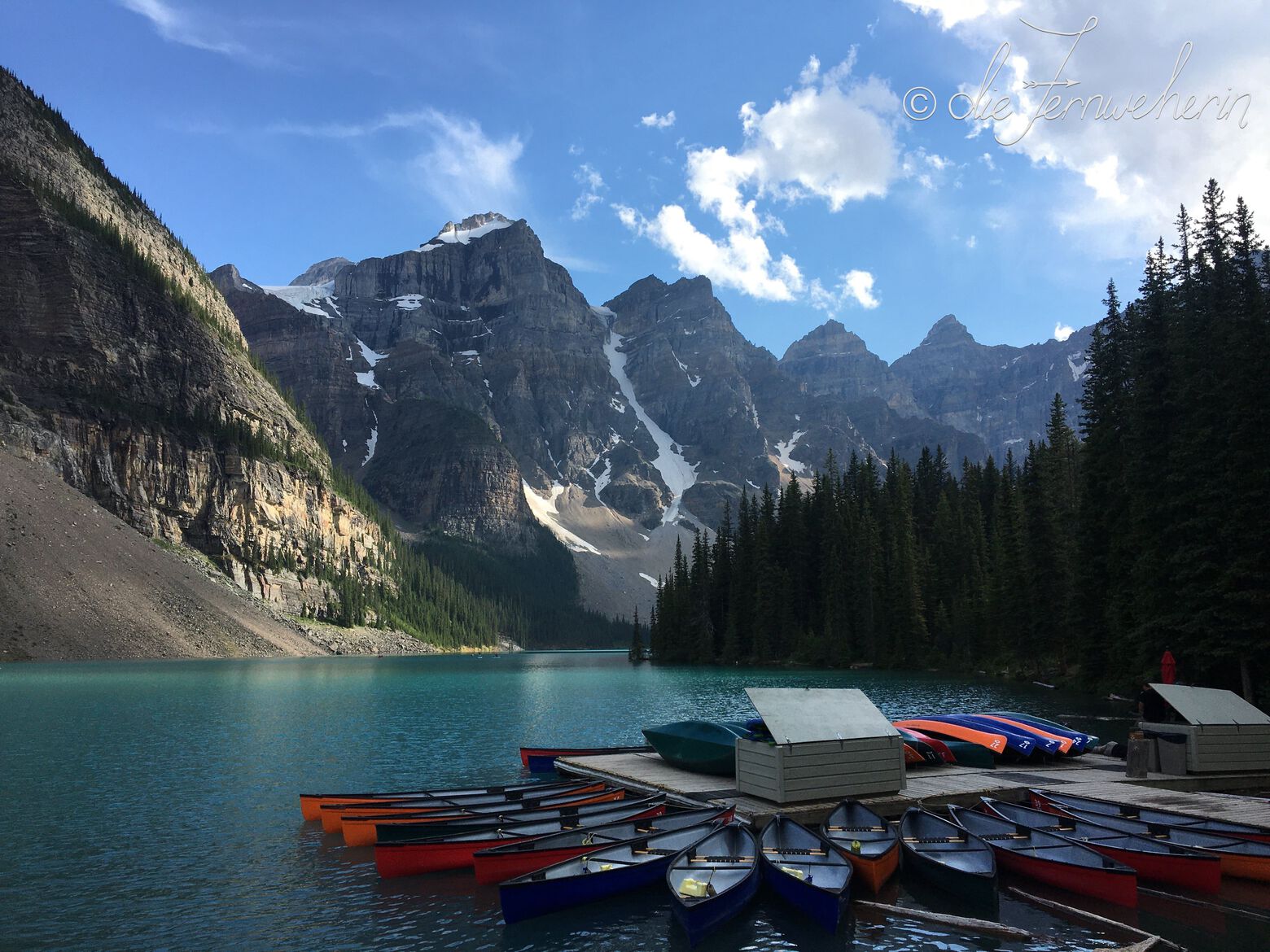
If hiking is your jam, I recommend the Shoreline Trail, followed by Larch Valley. If you’re a strong hiker, you can continue on to Sentinel Pass.

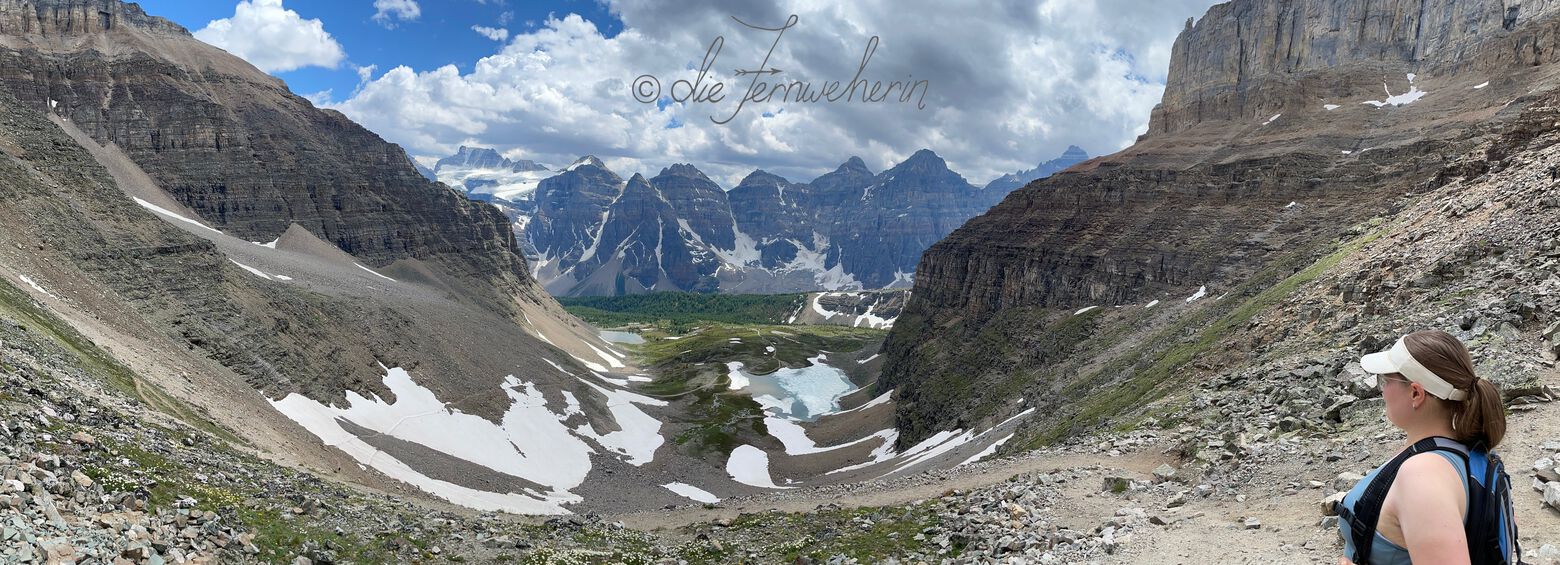
If you’re in a rush and not at all into hiking, you could spend as little as one or two hours here if all you did was walk up the Rockpile and spend some time at the lakeshore, but I really do recommend spending the time to take in all the beauty that Moraine Lake and its surroundings have to offer, and making a full day of it. Larch Valley & Eiffel Lake are both moderate hikes and take about four hours roundtrip, while the more advanced hikes take more like six to nine hours (with the notable exception of Babel, which only takes three).
How to get there
<< contents
driving
From Hwy 1, take the Lake Louise exit & follow the signs towards the lake. The Moraine Lake Road turnoff is on your lefthand side 2km past the village, and from there it’s 13km to the parking lot. Driving from Banff takes about an hour, Canmore 1h 15min, and Lake Louise Village 20 minutes. Pre-sunrise, this trip is uncomplicated. Later in the day, however, the Parks Canada traffic controllers arrive to prevent more vehicles from heading up until the lot empties enough. During the time that the Parks staff are present—from around 8:00am to 5:00pm (17:00)—turning left onto Moraine Lake Road is prohibited, as is U-turning at any point along Lake Louise Drive. If you drive past at just the right time, someone else may have just left & you might be allowed up, but chances are slim to begin with, and further hampered by the fact that you’ll have to do a complete loop every time you want to check. If you have a pet with you, you may be allowed up even if the lot is full, since you cannot take the shuttle. However, this is up to the discretion of the Parks staff, and is not guaranteed.
public transportation
If you are visiting during larch season (mid-September to mid-October), you can take Roam Transit Route 10 ($20 roundtrip per adult) to Moraine Lake, either directly from Banff townsite (1h 10min) or from Lake Louise Village (~20min). On weekends during this period, you also have the option of taking the Roam Transit Moraine Lake Shuttle ($10 roundtrip per adult) from the Lake Louise Park & Ride (see below). Reservations for these routes are strongly recommended.
If you are not visiting during larch season, you will have to make your way to the Park & Ride Lot (also called the Lake Louise Overflow Parking Lot), located along Hwy 1 about 5.5km southeast of the Lake Louise exit. You can drive or bike there, but there are also public transit options available. If you are staying in Banff, take Roam Transit Route 8X ($20 for a adult 1-day pass); if you are staying in Lake Louise Village or Campground, take the Parks Canada Park & Ride Connector Shuttle (free, but you have to present proof of your reservation). From the Park & Ride, take the Parks Canada Moraine Lake Shuttle ($8.50 roundtrip per adult, plus a $3 reservation fee per transaction). As of 2020, reservations are required to use this service; seats are released gradually, so you can book months in advance, or just a few days prior to your visit. This entire trip, including getting to the Park & Ride, takes between an hour & an hour and a half (great if you’re coming from Banff, but not so much if you’re staying in Lake Louise).
other options
< driving
The Fairmont Lake Louise runs a shuttle to & from Moraine Lake for the exclusive use of their guests ($21 roundtrip per adult). For guests of other hotels in the Lake Louise area, MPT offers the same service (also $21); if you are coming from Banff or Canmore and only planning on visiting Moraine Lake for a couple hours, you can park in the Lake Louise Village by the Info Centre and board the MPT shuttle from there.
Three Sisters Taxi offers direct transportation from any Banff or Canmore address to Moraine Lake. This service is advertised as “starting at $325” ($341 with tax), but as that only gets you an hour at Moraine Lake, I highly recommend going for the $400 full-day option instead (don’t worry, they don’t leave you there until the sun sets, you choose your pick-up/drop-off times in advance). This service sounds über-expensive, but keep in mind that it’s for up to 6 people, so it averages out to $67 per person; still quite a bit more than taking the Parks Canada shuttle, but you’re getting door-to-lake service & a lot more flexibility in terms of your timetable.
If you’re not interested in hiking, or are really pressed for time, another option is the Hop-On/Hop-Off Bus described above.
You can also bike to Moraine Lake along the paved road, even when it is closed to vehicle traffic. It is not an easy ride, but it is scenic, and allows you somewhat more flexibility in when you can visit. If you’re starting in Lake Louise, you can bike directly from your campsite or hotel following the driving directions above. From Banff or Canmore, you can either drive & park at the trailhead lot for either the Great Divide or Paradise Valley and then bike from there, or else take Roam Transit Route 8X to Lake Louise Village.
<< contents
Day 6
On your penultimate day in Banff, it’s time to experience one of the world’s most scenic drives: the Icefields Parkway. Also known as Hwy 93N, this is the road that connects Banff and Jasper National Parks. Many itineraries will have you traverse the entire length of the Parkway (and back!) in one day; while technically feasible, it means that you are spending at least six hours in a vehicle, and as a result you will have very little—if any—time to explore away from the road itself. Therefore, this itinerary covers only the Banff “half” of the Parkway, from Lake Louise to Saskatchewan Crossing. Even then, it’s still a full day, about seven to nine hours all told (three hours of travel time & four to six hours of exploration). If you really want to experience the whole of the Icefields Parkway in one go, I’d recommend staying in Jasper at least one night so that you don’t have to drive back to Banff the same day.
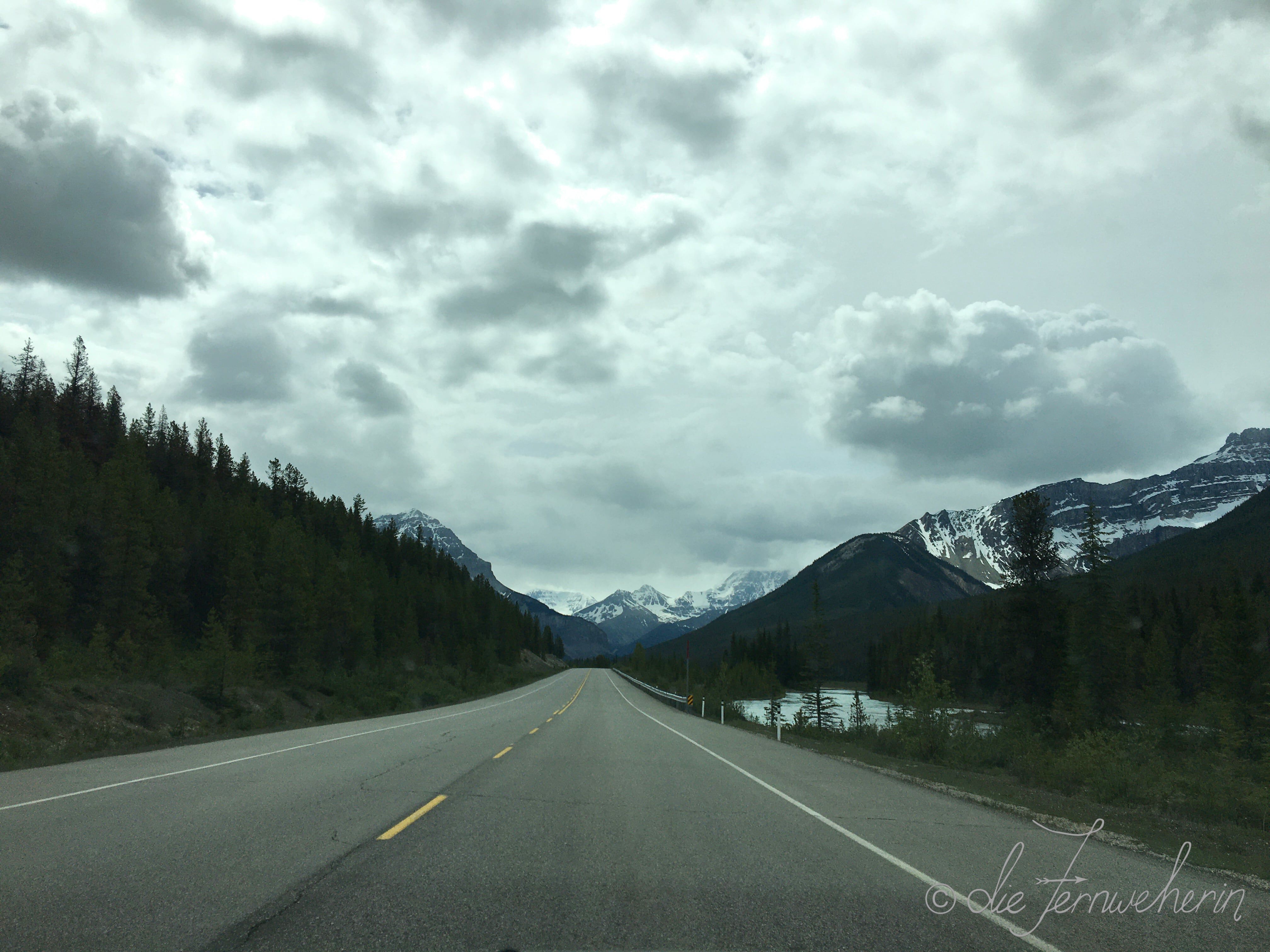
One of the world’s most scenic drives: Hwy 93N, also known as the Icefields Parkway.
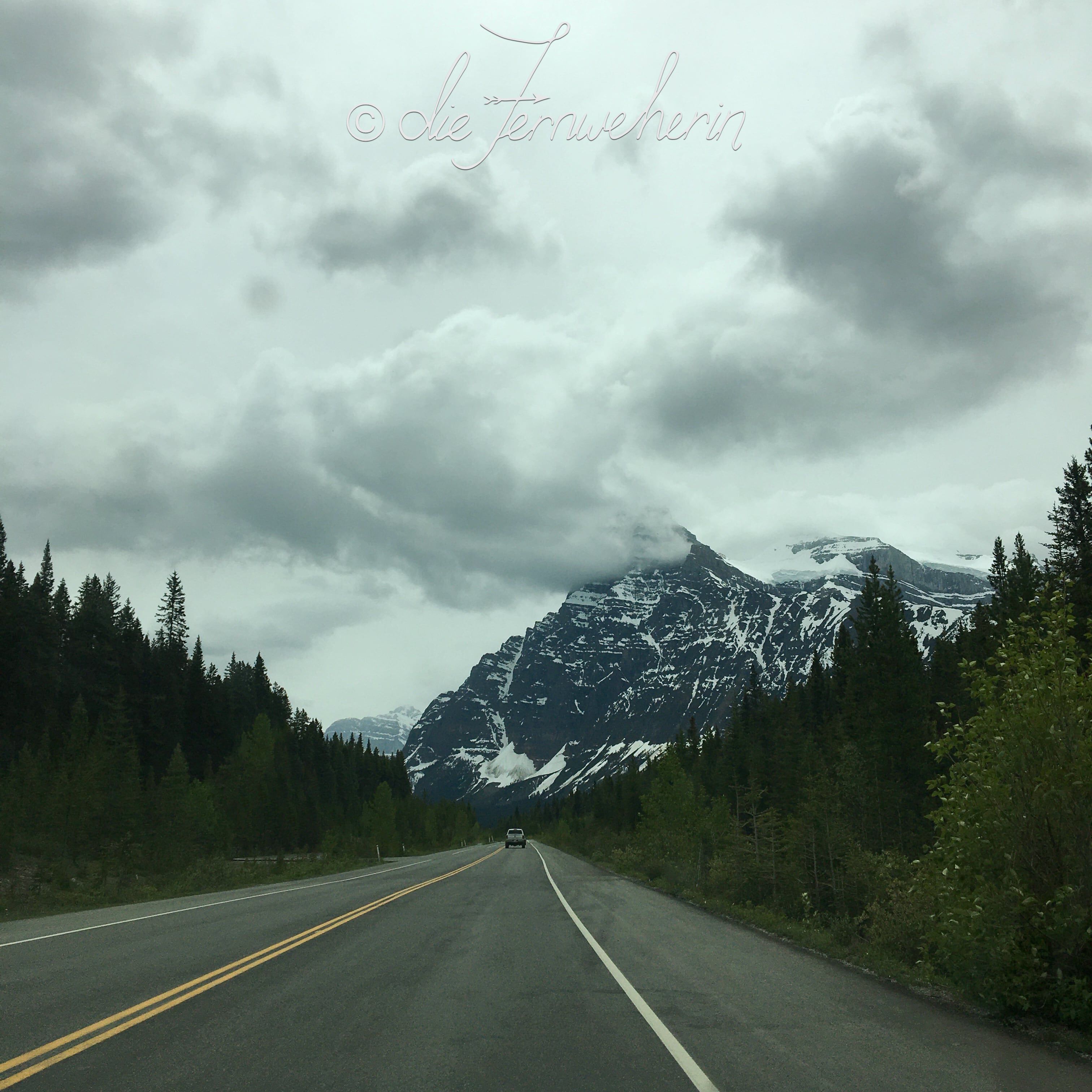
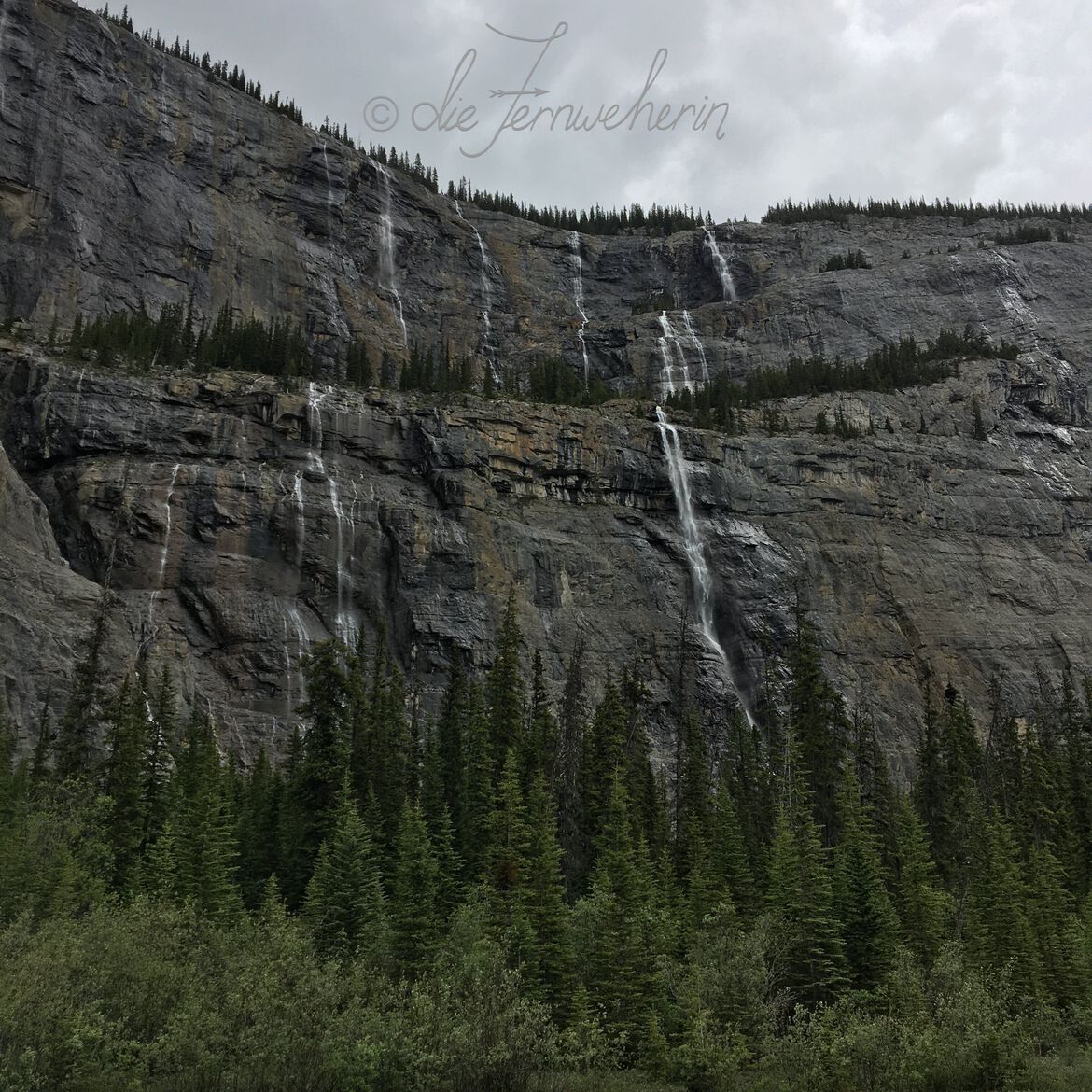
What to do
<< contents // how to get there >
Before you get started, make sure that you fuel up, both your vehicle and your stomach, because the only pit stop along the Parkway is almost 100km away, and the prices are atrocious. Make sure that you charge your phone, let someone know where you’re going and when you expect to be back, and make sure that you have some emergency supplies with you (a first aid kit and some nonperishable snacks at the very least). The Icefields Parkway is beautiful, and by and large it is safe, but it is remote—meaning that there is no phone service for most of the drive—and so you need to be prepared just in case you have car trouble or get injured on a hike. The Parkway is accessible year-round, as are all the hikes listed below, but if you choose to drive it in the winter, make sure that you are prepared for the season (for your vehicle, that means proper winter tires; for yourself, it means crampons and warm, layered clothing).
Once you’re all set, let’s get going. Like the Bow Valley Parkway, there are an abundance of scenic lookouts, picnic areas, and hiking trails along the road. I am going to recommend four spots in particular, but if you see a view that catches your fancy, feel free to find a pull-out and stop.
bow lake
peyto lake > // mistaya canyon > // saskatchewan crossing >
First up is Bow Lake. The lake itself is gorgeous, and worth a visit in its own right, but the real highlight here is the trail to Bow Glacier Falls. The hike begins nice and easy, curves along the lakeshore, and from there becomes somewhat more difficult (but still only moderately so) until you reach the falls themselves. Roundtrip it should take about three hours. If you aren’t interested in hiking, simply enjoy the views from the shoreline, or else rent a canoe, kayak, or paddleboard in town and bring it along.
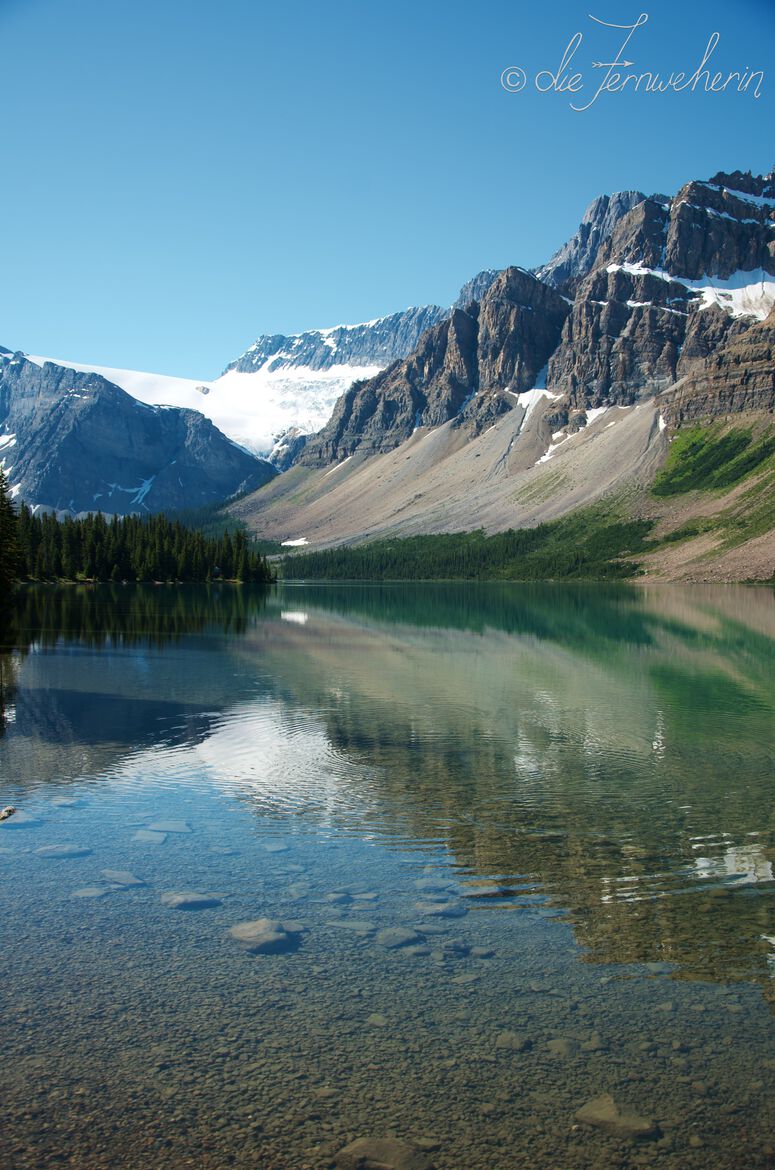
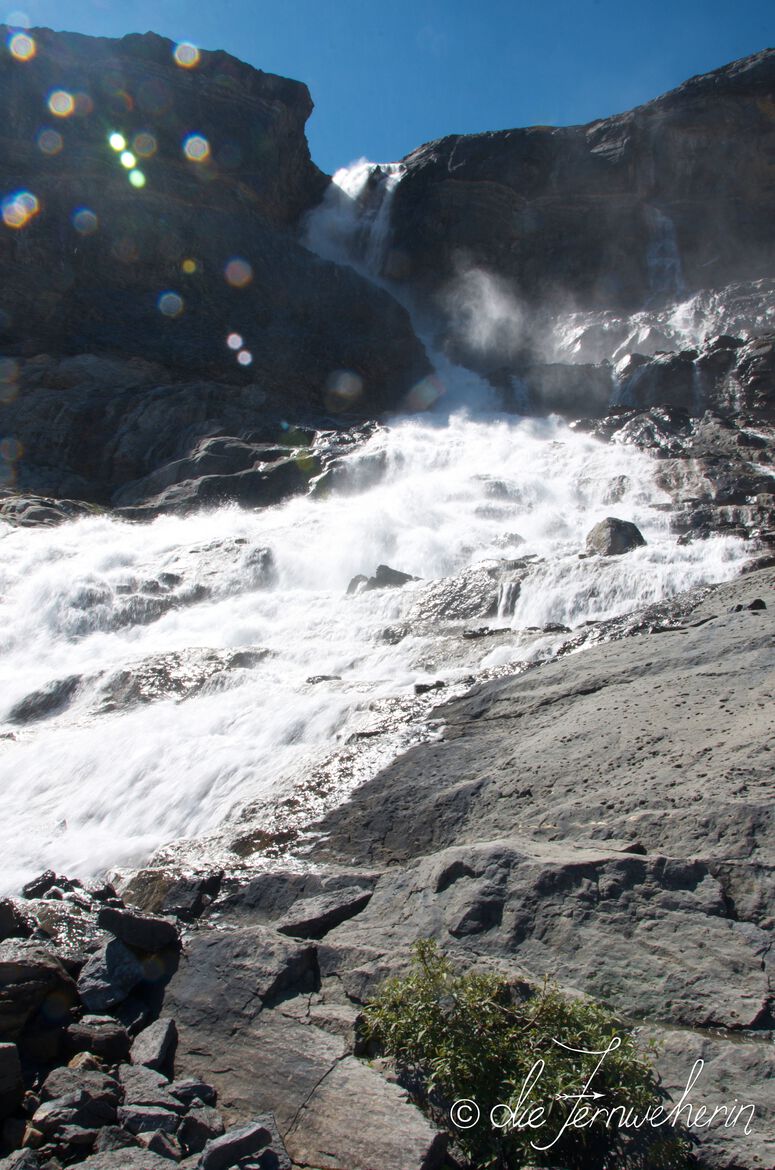
peyto lake
Second on the list, and probably the most popular stop on this half of the Parkway, is Peyto Lake. This lake isn’t known just for its beautiful glacial blue colour, but for its iconic outline—seen from above, it looks like the head of a wolf or a fox. The viewing platform is a short walk from the parking lot, and if you want to get an even better view, you can hike to Bow Summit (two hours roundtrip).
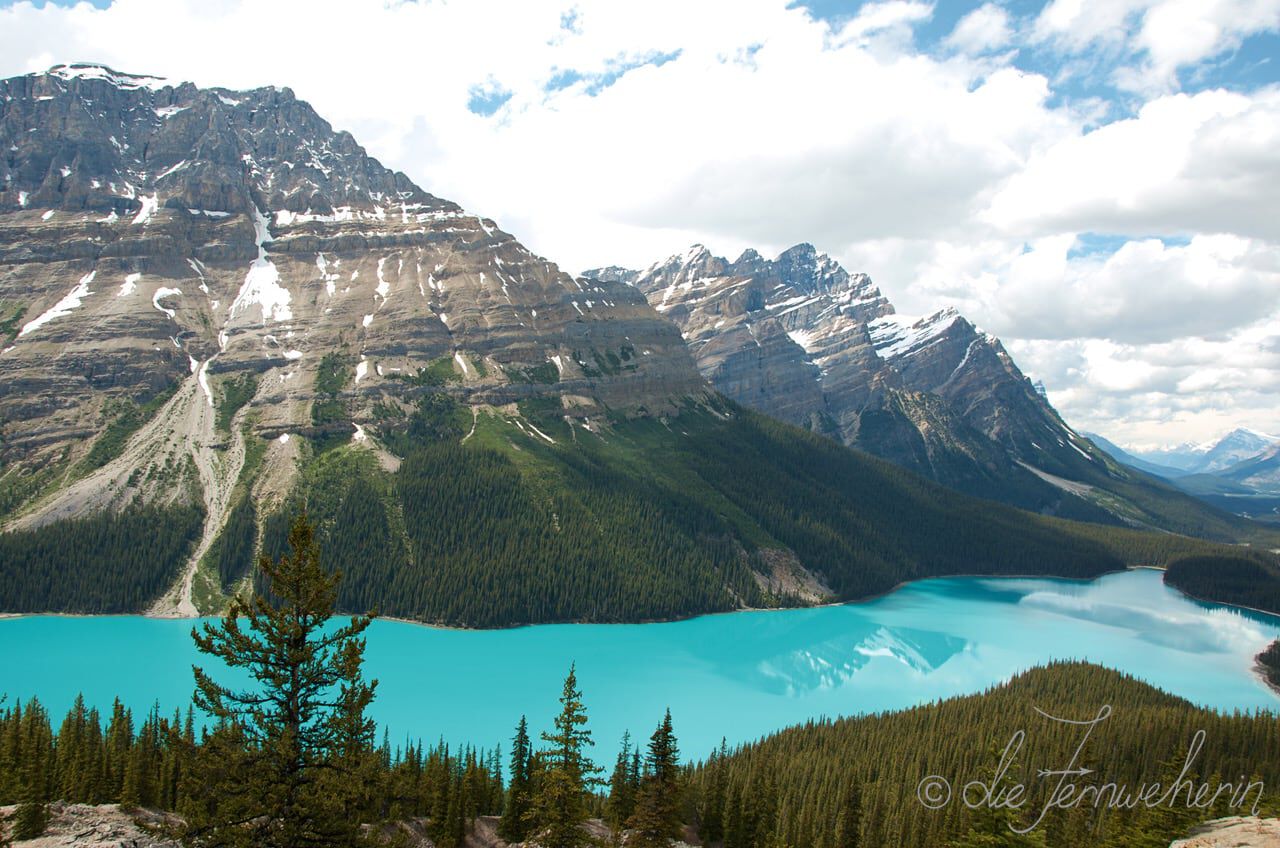
mistaya canyon
< bow lake // saskatchewan crossing >
Third is Mistaya Canyon. While not as famous as its cousins Johnston & Maligne, Mistaya is nevertheless worth a visit if you’re passing through the Parkway. The river you’ll see cutting through the canyon flows from Peyto Lake to join up with the Saskatchewan River, so this is a perfect place to connect where you just were and where you’ll be next. The actual hike through the canyon is short, sweet, and easy to the extreme (taking a mere half hour), and the views of the canyon itself and majestic Mount Sarbach in the background are excellent.
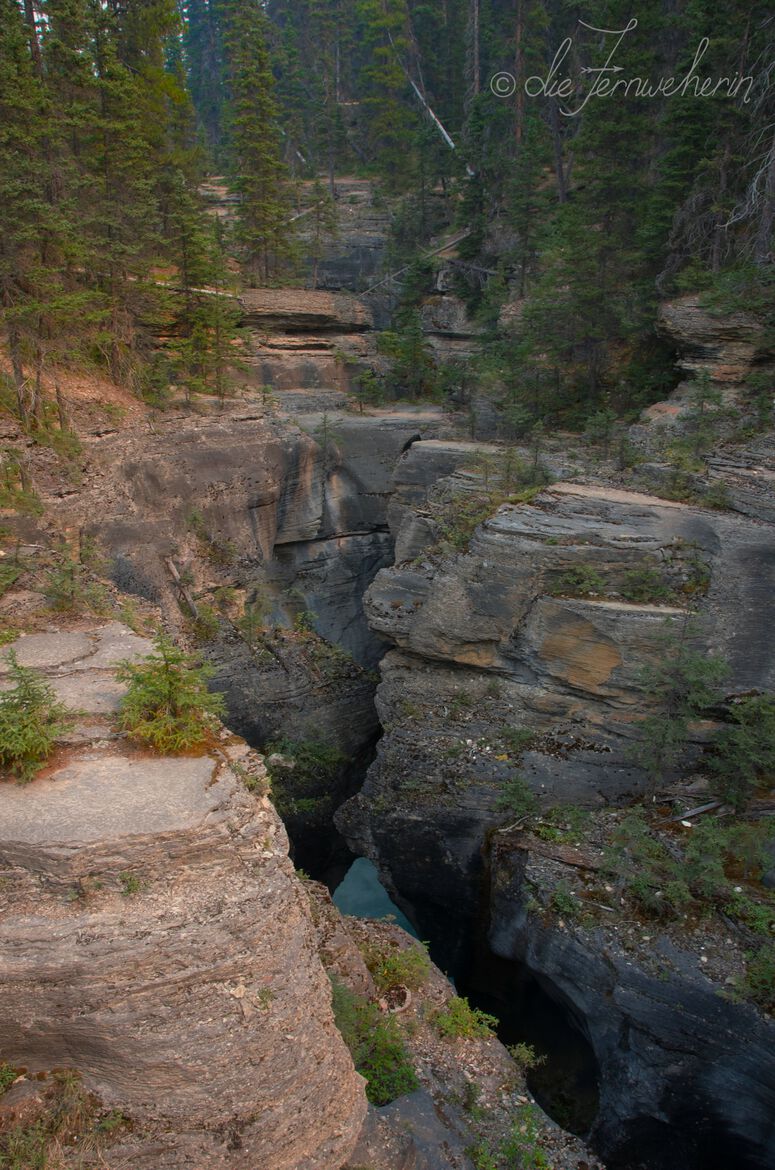
saskatchewan crossing
< bow lake // < peyto lake
The fourth (and last) destination of the day is Saskatchewan Crossing. Also known as the Howse Pass Viewpoint, this is a lookout over the area where three mountain rivers (including the Mistaya) join to become the North Saskatchewan River. It also marks the northern border of Banff National Park, which means that, unless you’ve extended your vacation past a week and your next destination is Jasper, it’s time to head back.
How to get there
<< contents
driving
To access the Icefields Parkway from Banff, Canmore, or Lake Louise, head northwest on Hwy 1, and take the Hwy 93N exit (located 2.5km past Lake Louise). Depending on where you’re starting from, expect it to take between 10-60min to reach this point. Bow Lake is 35km (25min) from here; to access the parking lot, turn left when you see the red-roofed Num-Ti-Jah Lodge. Drive a little bit further—about 7km, or another 5min—to access Peyto Lake, again on your left. Mistaya Canyon is another 30km (25min) drive along the Parkway (on your left!). And finally, Saskatchewan Crossing is a hop, skip, and a jump away—a mere 5km (5min)—the viewpoint itself is on your lefthand side, but the hotel and assorted facilities are on your righthand side a little ways down the road.
public transportation
There is no public transportation to (or on) the Icefields Parkway.
other options
To visit the Icefields Parkway without your own vehicle, whether rented or owned, you will have to book a tour. Unfortunately, because guided tours of the Icefields Parkway focus primarily on the Columbia Glacier as their selling point, you only get a few minutes for photos at stops along the way, and most of the Parkway’s spectacular viewpoints are omitted. If you want to be able to call the shots regarding where you stop and for how long, you will have to book a private tour (and pay an accordingly high price). However, if you are willing to compromise on which sights you visit, then here are a couple different group tour options to choose from:
Calgary Tours runs an all-day trip from Banff down the Icefields Parkway to the Columbia Icefields Centre, and visits both Peyto Lake and Bow Lake. Prices start at $115 per adult, but vary depending on the total group size, with smaller groups paying higher individual costs.
Brewster/Pursuit operates an almost identical excursion in terms of sites visited, but they also include hotel pick-up and drop-off, lunch, tickets for the Columbia Ice Explorer experience, and admission to the Icefield Skywalk. As a result, this package is notably more expensive ($295 per adult).
<< contents
Day 7
Unfortunately, this is the dreaded departure day (unless, of course, you’ve booked a longer trip, in which case refer to my recommendations for additional places to visit). As long as you don’t have an early flight to catch, I’d recommend taking some time to sleep in after the last few days, and enjoying a relaxing breakfast or brunch, ideally with a mountain view. Checkout time for most places is 11:00am, but if you’ve bought a daily Park Pass it’s valid until 4:00pm (16:00) today, so after you’ve packed up your things, hand your luggage over to the concierge (or stow it in your vehicle) and take some time to enjoy your last day in the area. Maybe take one last stroll around downtown Banff/Canmore, along the Bow River, or around Lake Louise if you’re staying there. Really try to soak everything in: all the beauty, and grandeur, and wildness. Say goodbye to Banff (for now), but leave with the knowledge that by visiting, you’ve helped invest in a legacy for the next generation.
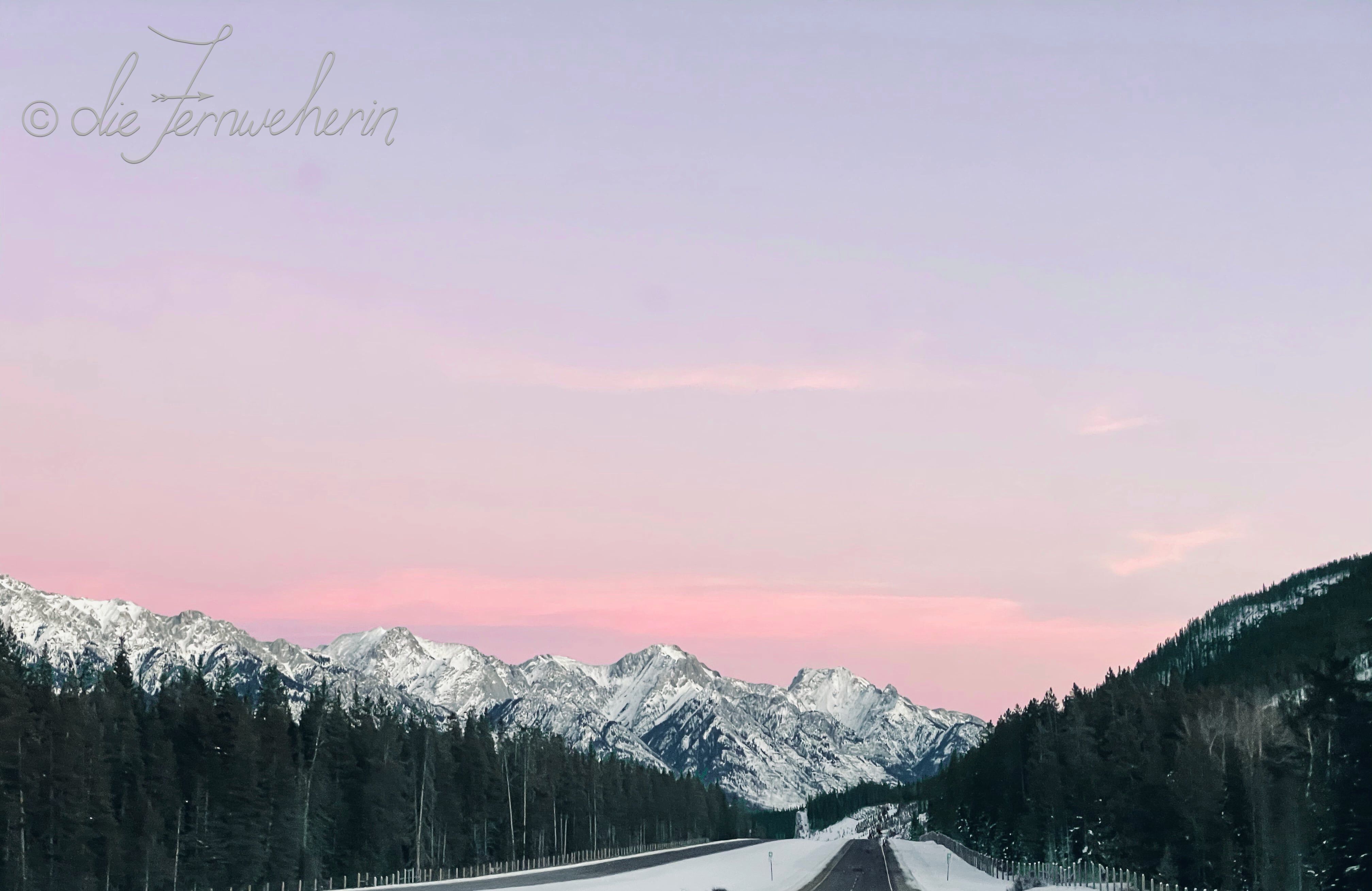
<< contents
<<< the best banff itinerary: part 2
<<< the best banff itinerary: part 1
Thank you so much for reading!
Happy travels,


